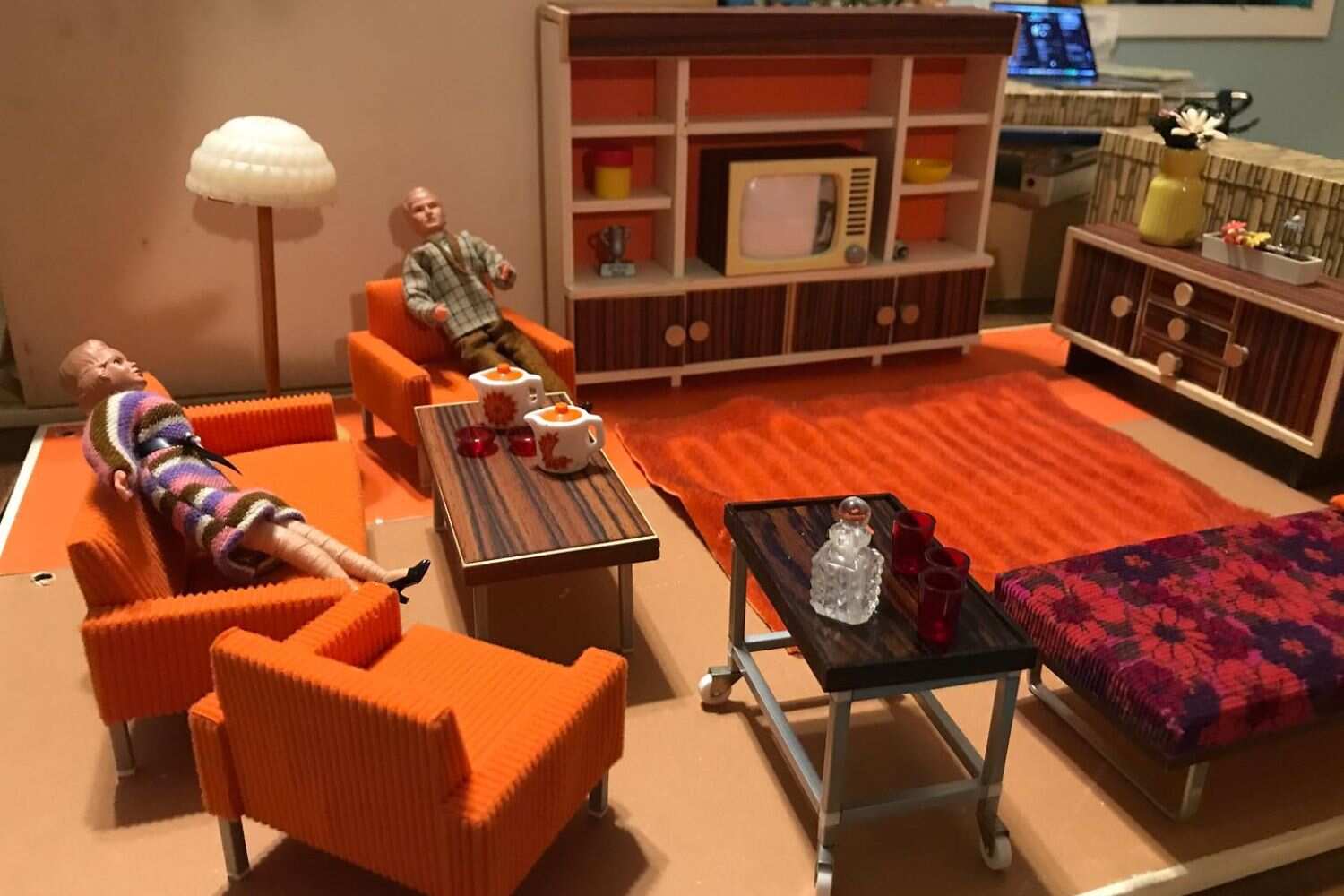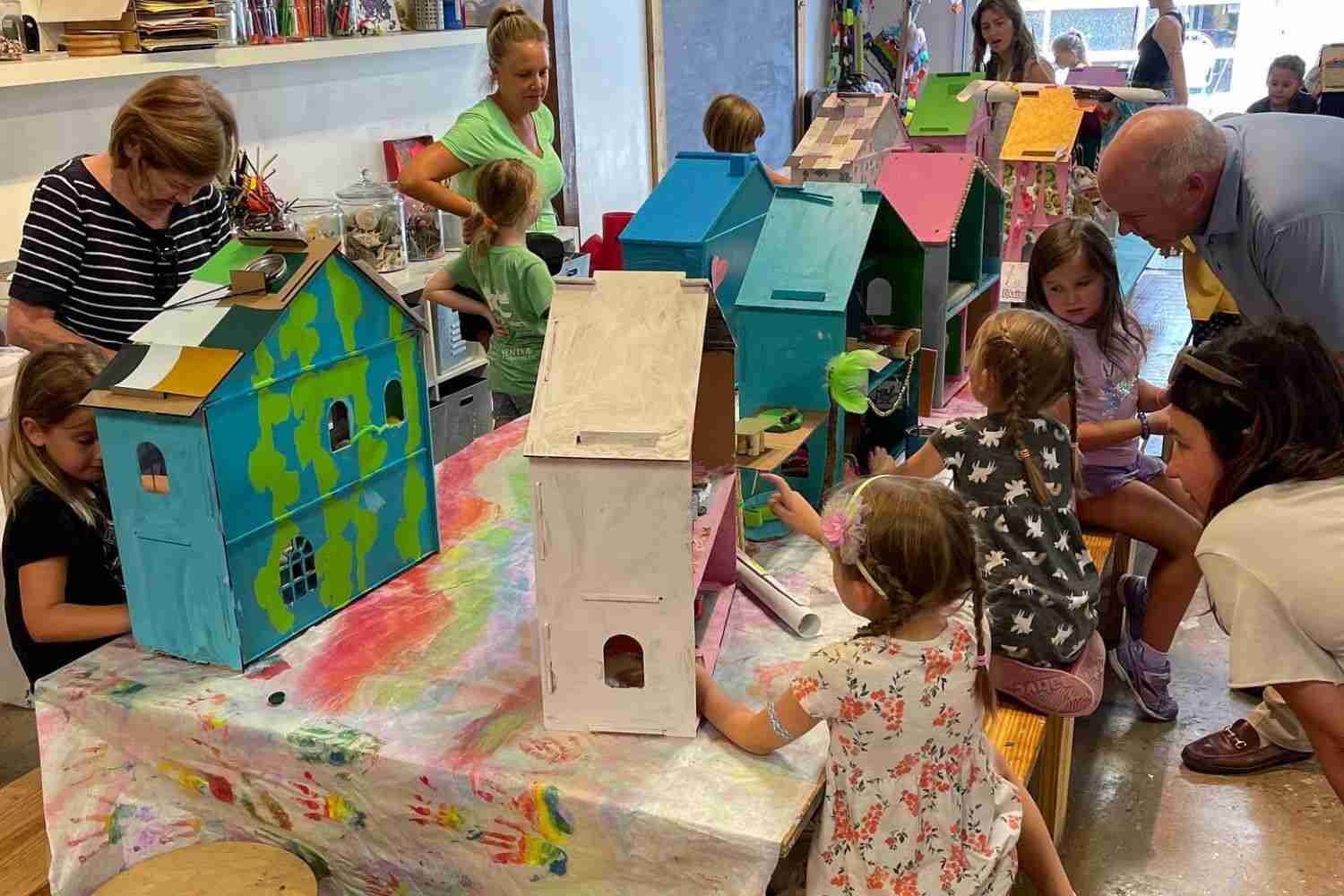From toddlers to pre-teens, find out – What’s the Best Age for a Dollhouse? Get expert advice on how and why you should consider introducing your child to this timeless classic toy!
Best Age for a Dollhouse
When children are growing up and developing their imagination, a dollhouse can be one of the best tools for exploration. At any age, playing with a dollhouse encourages creativity and emotional growth by letting kids replicate real-world settings in miniature form.
But when is the best age for a dollhouse?
Children in the pre-teen and younger age group can all gain valuable benefits from dollhouse play. However, the prime age range for this enchanting activity is typically four to nine years old. During this time, their imaginations are in full bloom and they are constantly seeking fresh opportunities for imaginative play.
We take an in-depth look at various stages of development when considering what’s right for your family – from toddlers just starting to explore imaginative play all the way through tweens who adore decorating detailed spaces.
Benefits of Dollhouse Play at Different Ages
Toddlers (Ages 1-3):
At this age, children are starting to explore and experiment with imaginative play. Dollhouses can help them develop motor skills, hand-eye coordination, and spatial awareness as they manipulate the characters and objects in the miniature world.
Preschoolers (Ages 3-5):
Preschoolers have an expanding vocabulary and are learning about the world around them. A dollhouse provides a platform for developing language skills as they create stories and dialogue for their characters. It also allows them to work on problem-solving and social skills as they play with others.
School-Aged (Ages 6-9):
As children enter school, their imagination continues to grow and develop. A dollhouse can be used to encourage literacy by writing scripts or creating stories based on the different rooms and characters in the house. It can also serve as a tool for teaching responsibility and organization as children take care of their miniature homes.
Tweens (Ages 10-12):
While some may think that older children have outgrown dollhouses, this couldn’t be further from the truth. In fact, tweens can use dollhouses to explore more complex emotions and relationships, as well as express their personal style through decorating and furnishing the spaces.
Best Age for a Dollhouse Playtime

From ages 3 to 9, children are in their prime for enjoying the world of dolls and dollhouses. As they engage in imaginative and pretend play, they can act out social scenarios and let their creativity soar.
What’s great is that dolls and dollhouses can evolve with their expanding imaginations, providing endless opportunities for fun. Toddlers can relish in reenacting everyday activities, while older kids can weave intricate storylines with captivating characters.
Different Ages Play and Learn with Their Dollhouse

Age: 1-2 Years
While they may not fully grasp the concept yet, these adorable chubby-cheeked little ones will still have a blast with a dollhouse. They’ll enjoy exploring the interactive features like sound effects and doors that open and close.
Plus, they’ll have fun rearranging furniture and discovering new ways to fit dolls and accessories into the rooms.
A dollhouse at this age is all about spatial exploration, fine motor skills, and cause and effect. As they approach 3 years old, you’ll start to see their imaginative play emerge, like putting dolls to bed or having them sit at the kitchen table.
Their perfect dollhouse:
- Should be very durable
- With no small pieces that can be a choking hazard.
- It should also have doors or accessories that open and close for added excitement.
Ages: 3-5 Years
Watch as your child’s creativity takes flight! At this age, children start inventing storylines for their dolls and bringing them to life in the dollhouse. Don’t worry if the tales don’t always make sense – their wild imaginations are still helping them grasp the world and people around them.
Their perfect dollhouse:
- Spacious enough for group playtime
- Accessible height for little hands to reach every floor
- Durable furniture that can be easily rearranged, without fear of damage
Ages: 6-9 Years
Watch as your child’s imagination blooms, creating intricate worlds that will surprise and delight you.
During this time, you may also notice a shift in their doll preferences. Family sets may take a backseat as they become enamored with dolls that resemble teenagers or iconic Barbies.
Unfortunately, societal pressures may deter boys from engaging in dollhouse play. But fear not! Consider alternative toys, such as the Hometown Heroes Play Set, that align with their interests while still fostering empathy and social skills.
Their perfect dollhouse:
- Spacious enough for friends, tailored to their favorite dolls.
- Complete with detailed accessories and furniture.
- Unleash the power of their creativity and watch their playtime soar to new heights.
Ages: 10-12 Years
While the dollhouse craze may be fading, older kids still find joy in playing with dolls and dollhouses. However, their play style may have evolved.
Some kids this age may keep their dollhouse play a secret, feeling self-conscious about still enjoying it when others have moved on. But chances are, their friends are doing the same thing.
For others, dollhouses become a tool for social play. When friends are over, they love creating intricate social scenarios with dolls and dollhouses. Playing alone, however, may not be as appealing.
Conclusion
All this being said, it is ultimately up to the individual parent or toy buyer to decide what is best for their children. At what age a child may be ready to play with dolls is highly subjective and dependent on many factors such as individual development and interests.
In the end, it is important to think about whether your child would find playing with dolls enjoyable and engaging. If they do, then by all means go ahead and purchase them a dollhouse!
It can offer great potential educational and creative opportunities even from an early age. Children who have the opportunity to learn about responsibility, imaginative role-play, and domestic care in a safe environment provided by a dollhouse are set up for success in life.
So parents, take your kid’s abilities into account regardless of their age when considering if they are ready for this special experience. Encourage them to explore and ask questions when presented with these learning opportunities; after all, the journey of knowledge has no age limit.
Thanks for reading our article Best Age for a Dollhouse? If you want to know more information, visit our website here.
Read more:

